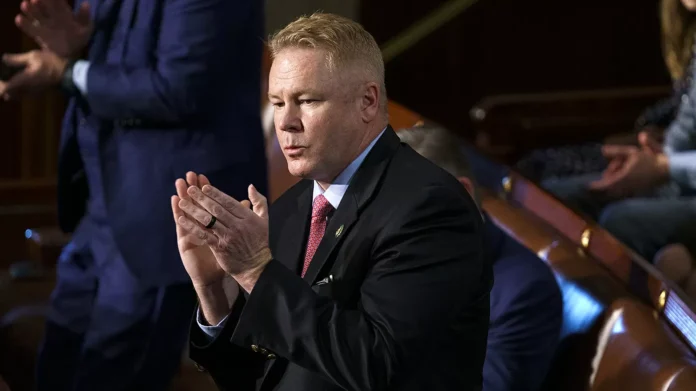The clock is ticking as the race to prevent a government shutdown next month is in full swing. With the mid-March deadline fast approaching, congressional negotiators are working tirelessly to reach a bipartisan deal that will keep the government funded. However, this effort is being met with another pressing issue – the Republican party’s determination to push through President Trump’s tax and funding priorities. As the two agendas collide, the stakes are high and the pressure is on to find a solution that will satisfy both parties.
For weeks, congressional negotiators have been locked in intense discussions, trying to find common ground on key issues such as immigration, healthcare, and disaster relief funding. The goal is to pass a spending bill that will keep the government running until the end of the fiscal year in September. However, with Democrats and Republicans at odds on many issues, reaching a compromise has proven to be a daunting task.
At the same time, House Republicans are racing against the clock to pass a budget resolution that would pave the way for President Trump’s ambitious tax reform plan. This plan includes cutting corporate taxes, simplifying the tax code, and providing tax relief for middle-class Americans. The Republicans see this as a crucial step in fulfilling their promise to boost economic growth and create jobs.
The collision of these two agendas has created a sense of urgency in Congress. Both sides are aware of the consequences of a government shutdown – halting essential services, furloughing government employees, and damaging the economy. The last time the government shut down was in 2013, and it cost the economy an estimated $24 billion. This time, the stakes are even higher as the impact of a shutdown could be felt by millions of Americans.
Despite the challenges, there is still hope for a bipartisan agreement. In recent weeks, there have been some signs of progress. Both Democrats and Republicans have expressed a willingness to compromise and find a solution that will keep the government funded. Senate Majority Leader Mitch McConnell has even stated that he is committed to avoiding a shutdown and is confident that a deal will be reached.
The Trump administration has also shown a willingness to work with Democrats to find a solution. White House Press Secretary Sarah Huckabee Sanders has stated that the President is open to a bipartisan deal and is willing to make concessions in order to reach an agreement. This is a positive step towards finding a solution that will benefit all Americans.
As the negotiations continue, it is important for both parties to remember the impact a government shutdown would have on the American people. It is crucial for them to put aside their differences and work towards a compromise that will keep the government running and address the needs of the American people.
In the midst of all the uncertainty and tension, it is important to remain positive and hopeful. Both parties have a responsibility to the American people to find a solution that will benefit everyone. It is time for them to put aside their political differences and work towards a common goal – keeping the government running and enacting policies that will benefit the country as a whole.
In conclusion, the race to prevent a government shutdown next month is a challenging one, but it is not without hope. With both Democrats and Republicans showing a willingness to compromise, there is a glimmer of hope that a bipartisan deal will be reached. It is now up to our elected officials to put the needs of the American people first and work towards a solution that will benefit the country as a whole. Let us hope that they will rise above their differences and come together for the greater good.

